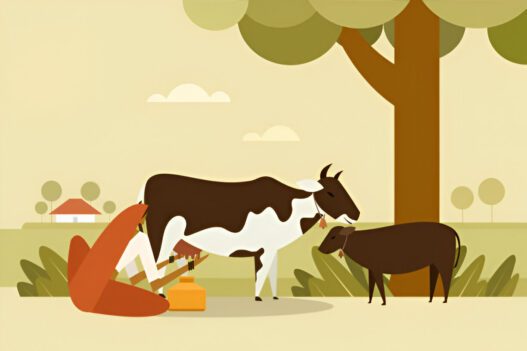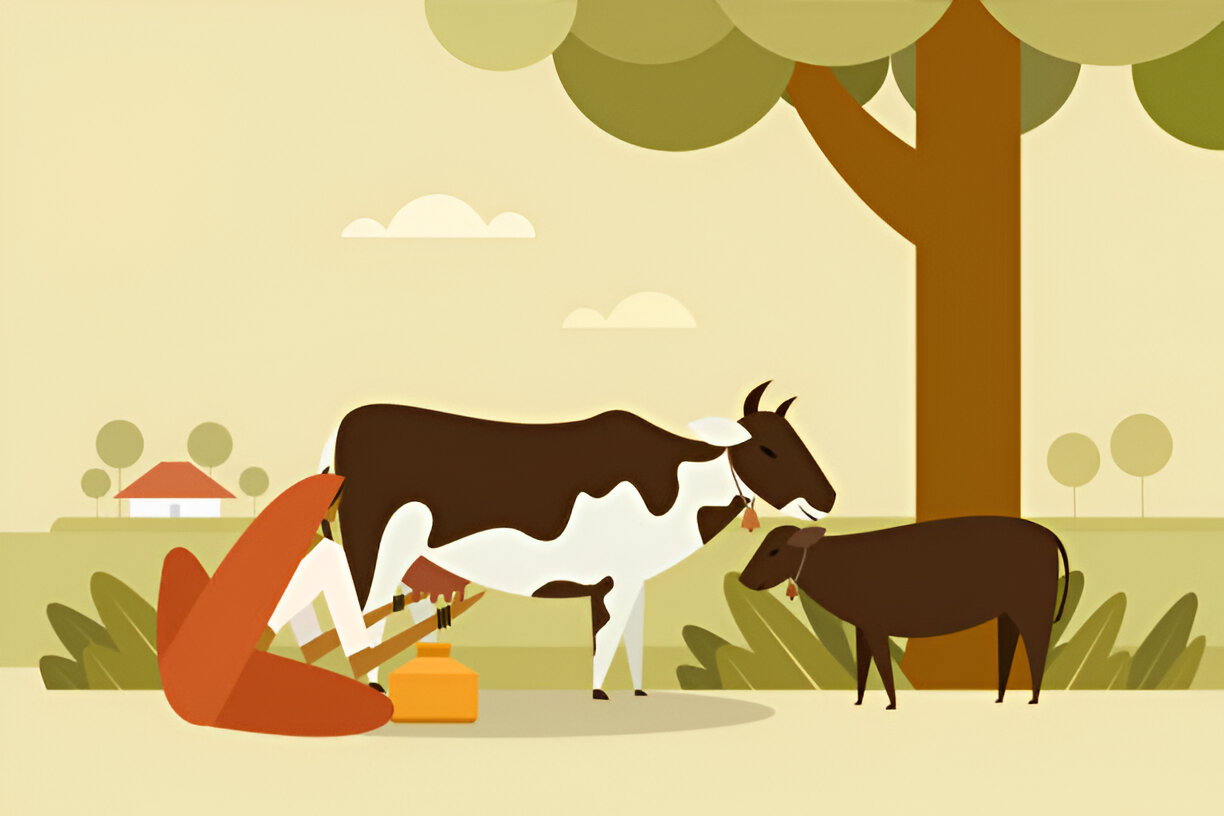India’s National Programme for Dairy Development (NPDD), a Central Sector Scheme, is dedicated to enhancing the quality of milk and milk products and increasing the share of organized procurement, processing, value addition, and marketing. This article will explore the core components, implementation mechanisms, and funding strategies of NPDD, designed to strengthen India’s dairy sector.
Core Objectives: Focus on Quality and Market Access
The NPDD’s primary objective is to enhance the overall quality of milk and milk products. The program also aims to streamline organized procurement channels, bolster milk processing capabilities, facilitate value addition, and improve market access. The scheme is designed with two primary components, each having distinct objectives and implementation strategies.
Components of the NPDD: A Two-Pronged Approach
The NPDD consists of two primary components:
-
Component ‘A’: This component focuses on building and strengthening infrastructure for quality milk testing and establishing primary chilling facilities. These facilities are crucial for State Cooperative Dairy Federations, District Cooperative Milk Producers’ Unions, Self-Help Group (SHG) run private dairies, Milk Producer Companies, and Farmer Producer Organizations (FPOs).
-
Component ‘B’: This component provides financial assistance through the Japan International Cooperation Agency (JICA). This assistance aligns with an existing agreement, emphasizing a strong international collaboration in the development of India’s dairy infrastructure.
Project Duration: A Long-Term Vision
The NPDD will be implemented nationwide from 2021-22 to 2025-26. The program’s commitment extends through 2027-28 to meet all the liabilities. The focus is to build a sustainable infrastructure and long-term capacity within the dairy industry.
Implementation Framework: A Multi-Layered Governance
The implementation of NPDD involves several key bodies:
-
Central Project Steering Committee (CPSC): Headed by the Secretary (AHD), Government of India, the CPSC provides overall policy and strategic support, monitoring progress, and approving action plans.
-
Project Sanctioning Committee (PSC): Also led by the Secretary AHD, this committee is responsible for project approvals after thorough appraisal and manages fund allocation within project components.
-
State Level Technical Management Committee (SLTMC): Chaired by a high-ranking state government official, the SLTMC oversees state-level implementation and ensures that the programme aligns with state policies, avoiding any duplication of activities.
-
Programme Coordination Management Cell (PCMC): This cell provides secretariat support to CPSC and PSC. It also analyses and prepares projects for timely placement for approval as well as provides inputs for successful implementation of scheme.
-
State Implementing Agency (SIA): State dairy federations, milk unions, SRLMs are primary implementing agencies, responsible for putting the scheme into action at the state level.
Financial Management: Ensuring Transparency and Accountability
The scheme operates with a clear funding pattern: a 60:40 cost-sharing arrangement between the Central and State governments for most states, with a 90:10 ratio for North Eastern and Hilly states. Central assistance for Union Territories and for Research and Development, and IT networking, central assistance is at 100%. For JICA-funded projects, funds are transferred to NDDB with interest, and then disbursed to producer-owned institutions. The scheme mandates adherence to the General Financial Rules (GFR) 2017. States must create dedicated accounts for funds and provide regular financial reports. This also includes audited expenditure statements and proper utilization certificates.
Component A: Building Infrastructure from the Ground Up
This component has several aspects that are key to building effective dairy infrastructure:
-
Focus on primary chilling facilities like bulk milk coolers and testing laboratories at various levels (village/block, district, state)
-
Emphasis on building and strengthening of existing milk procurement networks
-
Procurement of new technologies such as data processing and electronic milk adulteration testing machines.
Component B: Financial Support from JICA
Component B focuses on enhancing organized market access for dairy farmers, upgrading processing facilities and improving marketing infrastructure, with funds from JICA. The loan has a 20-year repayment period by Government of India, and a 10-year repayment period by the producer-owned institutions to NDDB.
Activities Supported under NPDD
The scheme supports various activities such as:
-
Procurement of equipment like bulk milk coolers, processing plants
* Establishment of laboratories for quality milk testing.
* Adoption of Information and Communication Technologies (ICT) for data and information management.
* Training for farmers, dairy personnel, and milk testers, along with farmer awareness programs.
* Research and development in processing and milk products
* Setting up and maintaining milk collection centers and chilling centers at village level.
Monitoring and Evaluation: A Continuous Process
The progress of the NPDD is meticulously monitored through various methods, including Quarterly progress reports (QPRs) from implementing agencies, Annual reports, Regular audits, and On-site project visits. A Project Management Agency (PMA) is responsible for developing a Management Information System (MIS). Additionally, a central monitoring system ensures that project timelines and performance metrics are effectively tracked and evaluated.
Conclusion
The National Programme for Dairy Development is a strategically designed initiative to transform India’s dairy sector. By improving milk quality, processing capabilities, and market access, the program aims to empower dairy farmers, ensure better returns, and promote growth in the rural economy. Through a well-defined implementation process and financial arrangements, the NPDD is poised to reshape the Indian dairy landscape.




